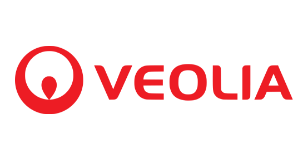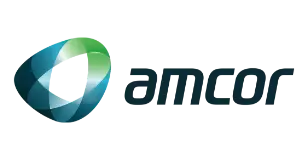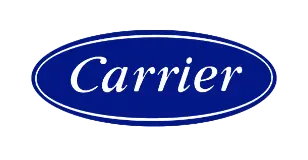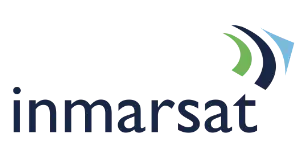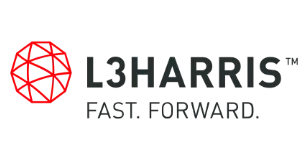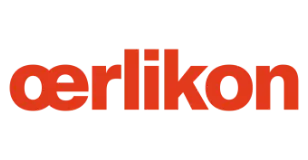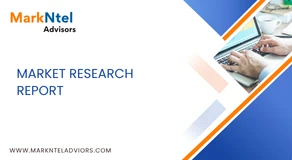
Global Hematology Diagnostics Market Research Report: Forecast (2025-2030)
Hematology Diagnostics Market - By Product Type (Hematology Analyzers, Hematology Reagents, Hematology Consumables, Flow Cytometry Systems), By Distribution Channel (Direct Sales),... By End Users (Hospitals and Clinics, Diagnostic Laboratories, Point-of-Cares Settings, Research Institutes) Read more
- Healthcare
- May 2025
- Pages 238
- Report Format: PDF, Excel, PPT
Market Definition
Hematology diagnostics is the study of blood and blood disorders. It is used to diagnose, monitor, and treat various ailments and conditions that affect the blood, including anemia, bleeding diseases, and blood cancers such as leukemia and lymphoma. Diagnostic tests are used to measure levels of red and white blood cells, platelets, hemoglobin, and other blood components. In addition, tests can detect abnormalities such as abnormal shapes, sizes, numbers of blood cells, and changes in blood clotting factors. Imaging tests, such as ultrasound and MRI, may also be used to help diagnose and monitor blood disorders.
Market Insights & Analysis: Global Hematology Diagnostics Market (2025-30):
The Global Hematology Diagnostics Market size was valued at around USD 8.4 billion in 2024 and is expected to reach USD 12.33 billion in 2030. Along with this, the market is estimated to grow at a CAGR of around 6.60% during the forecast period, i.e., 2025-30.
| Report Coverage | Details |
|---|---|
| Historical Years | 2020–23 |
| Forecast Years | 2025–30 |
| Market Value in 2024 | USD 8.4 Billion |
| Market Value by 2030 | USD 12.33 Billion |
| CAGR (2025–30) | 6.60% |
| Leading Region | North America |
| Top Key Players | Abbott Laboratories, Beckman Coulter, Sysmex Corporation, Roche Diagnostics, Siemens Healthineers, HORIB, Boule Diagnostics, Mindray, and others |
| Segmentation | By Product Type (Hematology Analyzers, Hematology Reagents, Hematology Consumables, Flow Cytometry Systems), By Distribution Channel (Direct Sales), By End Users (Hospitals and Clinics, Diagnostic Laboratories, Point-of-Cares Settings, Research Institutes) |
| Key Report Highlights |
|
*Boost strategic growth with in-depth market analysis - Get a free sample preview today!
Hematology diagnostics require blood collection from patients using venipuncture or finger-prick methods, centrifugation to separate the blood's constituents, and quantitative or qualitative analysis. Hematology tests use various In-Vitro Diagnostic (IVD) techniques to identify issues with Red Blood Cells (RBCs), White Blood Cells (WBCs), lymph plasma, and platelets. These techniques include flow cytometry, blood analysis, immunodiagnostics, hemostasis, and molecular diagnostics.
For instance, anemia, an iron deficiency disease brought on by improper diet & nutrition, is most prevalent in the Middle East and Africa area. These procedures can identify physiological flaws early and treat them to prevent problems with motor and cognitive development.
The prime factors contributing to the growth of the market across the globe are the technological advancements for new automated analyzers & testers and rising blood-related disorders across both children & elders. Moreover, the rising geriatric population & the number of blood disorder-related incidents are other crucial aspects likely to surge the overall market growth of hematology diagnostics across the globe. In addition, increasing consumer awareness of blood diseases is anticipated to boost market growth significantly. Furthermore, in the upcoming years, the players competing in the market may benefit from increased investment in research & development activities to produce new diagnostic solutions.

Global Hematology Diagnostics Market Driver:
Rising Incidence of Blood Diseases Such as Cancer – The prevalence of blood disorders like hemophilia, thalassemia, and anemia is rising, significantly impacting the demand for hematology diagnostics. For example, every year, anemia is identified in about 29% of women and 38% of pregnant women, according to the National Institutes of Health (NIH). Thus, the increasing prevalence of blood-related disorders around the globe is driving their adoption worldwide. Early diagnosis can reduce mortality rates by preventing the disorder's long-term negative impacts.
Global Hematology Diagnostics Market Opportunity:
Constant Technological Advancements in Diagnostic Techniques – Blood tests are increasingly being used for early leukemia detection and treatment as leukemia's prevalence among the world's population rises. According to American Cancer Society (ACS) data, 48% of all blood cancers are lymphomas. In addition to usage in cancer, such procedures use blood as a test sample for diagnosing conditions like diabetes, coronary heart disease, thalassemia, and thrombocytopenia. Citing its expansive adoption, market players have introduced several technological advancements in diagnostic techniques, leading to point-of-care tests and automated hematology diagnosis, consequently driving market growth across the world.
Global Hematology Diagnostics Market Challenge:
Escalating Medical Burden Due to Inadequate Insurance Coverage – Medical expenses heavily burden patients due to diagnostic tools like hematology analyzers. As a result, escalating hematology diagnostic costs and insufficient healthcare insurance coverage for these diagnostic procedures in many regions are prime factors anticipated to restrain market revenue growth in the coming years. Other than this, the industry is also anticipated to be significantly hindered by a lack of operational efficiency, trained professionals, and high-end hardware and software installed in flow cytometers and analyzers.
Global Hematology Diagnostics Market (2025-30): Segmentation Analysis
The Global Hematology Diagnostics Market study of MarkNtel Advisors evaluates & highlights the major trends & influencing factors in each segment & includes predictions for the period 2025–2030 at the global level. Based on the analysis, the market has been further classified as:
Based on End User:
- Hospitals and Clinics
- Diagnostic Laboratories
- Point-of-Cares Settings
- Research Institutes
The Hospitals and Clinics acquired the largest market share in the historical period; however, the diagnostic labs are predicted to proliferate during the projection period. This flourishing growth is significantly attributed to the expansion of diagnostic facilities and the accessibility of cutting-edge equipment. Additionally, the automation of diagnostic instruments is likely to lower the cost of these tests, thereby increasing their demand in the future. Moreover, rising R&D initiatives demonstrating the effectiveness of hematology analyzers will probably positively influence their adoption in hospitals, clinics, and labs. For instance, automated hematologic analyzers are frequently used in medical laboratories, according to a paper titled "Establishment of better review criteria for hematology analyzers in cancer hospitals,
Based on Product Type:
- Hematology Analyzers
- Automated Hematology Analyzers
- Semi-automated Hematology Analyzers
- Point-of-Care (POC) Hematology Analyzers
- Hematology Reagents
- Stains & Dyes
- Controls & Calibrator
- Others (Buffers, Solutions)
- Hematology Consumables
- Cuvettes
- Tubes
- Lancets
- Others
- Flow Cytometry Systems
Among all, the hematology analyzer segment (especially fully automated systems) is the industry leader owing to its dominance, technological advantages, and essential role in modern diagnostics. This leadership is significantly driven by their ability to deliver standardized, accurate, and reproducible results with minimal human intervention, supporting high-volume, uninterrupted testing in clinical laboratories. Continuous innovation, such as integration with laboratory information systems and advanced diagnostic capabilities, further strengthens their market position. With rising global prevalence of blood disorders and increasing demand for reliable, high-throughput diagnostics, the fully automated hematology analyzer segment is expected to maintain its leadership through 2030.
Global Hematology Diagnostics Market (2025-30): Regional Projection
Geographically, the Global Hematology Diagnostics Market expands across:
- North America
- South America
- Europe
- Middle East and Africa
- Asia-Pacific
North America is projected to dominate the industry during the forecast period, i.e., 2025-30. This flourishing growth is substantially attributed to the advanced healthcare infrastructure, early adoption of new technologies, high diagnostics awareness, and the presence of major industry players such as Beckman Coulter, Sysmex America, and Abbott Diagnostics, North America’s strong network of hospitals, clinical laboratories, and cancer centers—supported by robust reimbursement systems and regulatory clarity—further reinforces its dominant position. Moreover, the rising incidence of diseases such as anemia, hemophilia, leukemia, sickle-cell anemia, lymphomas, and several infections has contributed to the emerging demand for hematology diagnosis.
Global Hematology Diagnostics Industry Recent Development:
- 2024: HORIBA Medical introduced the HELO 2.0 platform as a high throughput, automated hematology solution with CE-IVDR approval. This platform offers modularity, a track-based system for efficient workflow, and quality-controlled parameters, designed to meet the needs of high-throughput hematology labs.
Gain a Competitive Edge with Our Global Hematology Diagnostics Market Report
- Global Hematology Diagnostics Market Report by MarkNtel Advisors provides a detailed & thorough analysis of market size & share, growth rate, competitive landscape, and key players. This comprehensive analysis helps businesses gain a holistic understanding of the market dynamics & make informed decisions.
- This report also highlights current market trends & future projections, allowing businesses to identify emerging opportunities & potential challenges. By understanding market forecasts, companies can align their strategies & stay ahead of the competition.
- Global Hematology Diagnostics Market Report aids in assessing & mitigating risks associated with entering or operating in the market. By understanding market dynamics, regulatory frameworks, and potential challenges, businesses can develop strategies to minimize risks & optimize their operations.
Frequently Asked Questions
- Market Segmentation
- Introduction
- Product Definition
- Research Process
- Assumptions
- Executive Summary
- Global Hematology Diagnostics Market Regulations, Policies & Product Standards
- Global Hematology Diagnostics Market Trends & Developments
- Global Hematology Diagnostics Market Dynamics
- Drivers
- Challenges
- Global Hematology Diagnostics Market Hotspots & Opportunities
- Global Hematology Diagnostics Market Value Chain Analysis
- Global Hematology Diagnostics Market Outlook, 2020-2030F
- Market Size & Analysis
- Revenues (USD Million Units)
- Market Volume (Million Units)
- Market Share & Analysis
- By Product Type
- Hematology Analyzers– Market Size & Forecast 2020-2030, USD Million & Million Units
- Automated Hematology Analyzers– Market Size & Forecast 2020-2030, USD Million & Million Units
- Semi-automated Hematology Analyzers– Market Size & Forecast 2020-2030, USD Million & Million Units
- Point-of-Care (POC) Hematology Analyzers– Market Size & Forecast 2020-2030, USD Million & Million Units
- Hematology Reagents– Market Size & Forecast 2020-2030, USD Million & Million Units
- Stains & Dyes– Market Size & Forecast 2020-2030, USD Million & Million Units
- Controls & Calibrators– Market Size & Forecast 2020-2030, USD Million & Million Units
- Others (Buffers, Solutions)– Market Size & Forecast 2020-2030, USD Million & Million Units
- Hematology Consumables– Market Size & Forecast 2020-2030, USD Million & Million Units
- Cuvettes– Market Size & Forecast 2020-2030, USD Million & Million Units
- Tubes– Market Size & Forecast 2020-2030, USD Million & Million Units
- Lancets– Market Size & Forecast 2020-2030, USD Million & Million Units
- Others– Market Size & Forecast 2020-2030, USD Million & Million Units
- Flow Cytometry Systems-Market Size & Forecast 2020-2030, USD Million & Units
- Hematology Analyzers– Market Size & Forecast 2020-2030, USD Million & Million Units
- By Distribution Channel
- Direct Sales– Market Size & Forecast 2020-2030, USD Million & Million Units
- Third-party Distributors– Market Size & Forecast 2020-2030, USD Million & Million Units
- Online Platforms
- Direct Sales– Market Size & Forecast 2020-2030, USD Million & Million Units
- By End Users
- Hospitals and Clinics- Market Size & Forecast 2020-2030, USD Million & Million Units
- Diagnostic Laboratories- Market Size & Forecast 2020-2030, USD Million & Million Units
- Point-of-Cares Settings
- Research Institutes
- By Region
- North America
- Europe
- Asia-Pacific
- South America
- Middle East & Africa
- By Product Type
- Market Size & Analysis
- North America Hematology Diagnostics Market Outlook, 2020-2030F
- Market Size & Analysis
- Market Revenues (USD Million)
- Market Volume (Million Units)
- Market Share & Analysis
- By Product Type – Market Size & Forecast 2020-2030, USD Million & Million Units
- By End User – Market Size & Forecast 2020-2030, USD Million & Million Units
- By Distribution Channel – Market Size & Forecast 2020-2030, USD Million & Million Units
- By Country
- United States
- Canada
- Mexico
- United States Hematology Diagnostics Market Outlook, 2020-2030F
- Market Size & Analysis
- Market Revenues (USD Million)
- Market Volume (Million Units)
- Market Share & Analysis
- By Product Type – Market Size & Forecast 2020-2030, USD Million & Million Units
- By End User – Market Size & Forecast 2020-2030, USD Million & Million Units
- By Distribution Channel – Market Size & Forecast 2020-2030, USD Million & Million Units
- Market Size & Analysis
- Canada Hematology Diagnostics Market Outlook, 2020-2030F
- Market Size & Analysis
- Market Revenues (USD Million)
- Market Volume (Million Units)
- Market Share & Analysis
- By Product Type – Market Size & Forecast 2020-2030, USD Million & Million Units
- By End User – Market Size & Forecast 2020-2030, USD Million & Million Units
- By Distribution Channel – Market Size & Forecast 2020-2030, USD Million & Million Units
- Market Size & Analysis
- Mexico Hematology Diagnostics Market Outlook, 2020-2030F
- Market Size & Analysis
- Market Revenues (USD Million)
- Market Volume (Million Units)
- Market Share & Analysis
- By Product Type – Market Size & Forecast 2020-2030, USD Million & Million Units
- By End User – Market Size & Forecast 2020-2030, USD Million & Million Units
- By Distribution Channel – Market Size & Forecast 2020-2030, USD Million & Million Units
- Market Size & Analysis
- Market Size & Analysis
- Europe Hematology Diagnostics Market Outlook, 2020-2030F
- Market Size & Analysis
- Market Revenues (USD Million)
- Market Volume (Million Units)
- Market Share & Analysis
- By Product Type – Market Size & Forecast 2020-2030, USD Million & Million Units
- By End User – Market Size & Forecast 2020-2030, USD Million & Million Units
- By Distribution Channel – Market Size & Forecast 2020-2030, USD Million & Million Units
- By Country
- Germany
- United Kingdom
- France
- Italy
- Spain
- Rest of Europe
- Germany Hematology Diagnostics Market Outlook, 2020-2030F
- Market Size & Analysis
- Market Revenues (USD Million)
- Market Volume (Million Units)
- Market Share & Analysis
- By Product Type – Market Size & Forecast 2020-2030, USD Million & Million Units
- By End User – Market Size & Forecast 2020-2030, USD Million & Million Units
- By Distribution Channel – Market Size & Forecast 2020-2030, USD Million & Million Units
- Market Size & Analysis
- United Kingdom Hematology Diagnostics Market Outlook, 2020-2030F
- Market Size & Analysis
- Market Revenues (USD Million)
- Market Volume (Million Units)
- Market Share & Analysis
- By Product Type – Market Size & Forecast 2020-2030, USD Million & Million Units
- By End User – Market Size & Forecast 2020-2030, USD Million & Million Units
- By Distribution Channel – Market Size & Forecast 2020-2030, USD Million & Million Units
- Market Size & Analysis
- France Hematology Diagnostics Market Outlook, 2020-2030F
- Market Size & Analysis
- Market Revenues (USD Million)
- Market Volume (Million Units)
- Market Share & Analysis
- By Product Type – Market Size & Forecast 2020-2030, USD Million & Million Units
- By End User – Market Size & Forecast 2020-2030, USD Million & Million Units
- By Distribution Channel – Market Size & Forecast 2020-2030, USD Million & Million Units
- Market Size & Analysis
- Italy Hematology Diagnostics Market Outlook, 2020-2030F
- Market Size & Analysis
- Market Revenues (USD Million)
- Market Volume (Million Units)
- Market Share & Analysis
- By Product Type – Market Size & Forecast 2020-2030, USD Million & Million Units
- By End User – Market Size & Forecast 2020-2030, USD Million & Million Units
- By Distribution Channel – Market Size & Forecast 2020-2030, USD Million & Million Units
- Market Size & Analysis
- Spain Hematology Diagnostics Market Outlook, 2020-2030F
- Market Size & Analysis
- Market Revenues (USD Million)
- Market Volume (Million Units)
- Market Share & Analysis
- By Product Type – Market Size & Forecast 2020-2030, USD Million & Million Units
- By End User – Market Size & Forecast 2020-2030, USD Million & Million Units
- By Distribution Channel – Market Size & Forecast 2020-2030, USD Million & Million Units
- Market Size & Analysis
- Rest of Europe Hematology Diagnostics Market Outlook, 2020-2030F
- Market Size & Analysis
- Market Revenues (USD Million)
- Market Volume (Million Units)
- Market Share & Analysis
- By Product Type – Market Size & Forecast 2020-2030, USD Million & Million Units
- By End User – Market Size & Forecast 2020-2030, USD Million & Million Units
- By Distribution Channel – Market Size & Forecast 2020-2030, USD Million & Million Units
- Market Size & Analysis
- Market Size & Analysis
- Asia-Pacific Hematology Diagnostics Market Outlook, 2020-2030F
- Market Size & Analysis
- Market Revenues (USD Million)
- Market Volume (Million Units)
- Market Share & Analysis
- By Product Type – Market Size & Forecast 2020-2030, USD Million & Million Units
- By End User – Market Size & Forecast 2020-2030, USD Million & Million Units
- By Distribution Channel – Market Size & Forecast 2020-2030, USD Million & Million Units
- By Country
- China
- Japan
- India
- South Korea
- Australia
- Rest of Asia-Pacific
- China Hematology Diagnostics Market Outlook, 2020-2030F
- Market Size & Analysis
- Market Revenues (USD Million)
- Market Volume (Million Units)
- Market Share & Analysis
- By Product Type – Market Size & Forecast 2020-2030, USD Million & Million Units
- By End User – Market Size & Forecast 2020-2030, USD Million & Million Units
- By Distribution Channel – Market Size & Forecast 2020-2030, USD Million & Million Units
- Market Size & Analysis
- Japan Hematology Diagnostics Market Outlook, 2020-2030F
- Market Size & Analysis
- Market Revenues (USD Million)
- Market Volume (Million Units)
- Market Share & Analysis
- By Product Type – Market Size & Forecast 2020-2030, USD Million & Million Units
- By End User – Market Size & Forecast 2020-2030, USD Million & Million Units
- By Distribution Channel – Market Size & Forecast 2020-2030, USD Million & Million Units
- Market Size & Analysis
- India Hematology Diagnostics Market Outlook, 2020-2030F
- Market Size & Analysis
- Market Revenues (USD Million)
- Market Volume (Million Units)
- Market Share & Analysis
- By Product Type – Market Size & Forecast 2020-2030, USD Million & Million Units
- By End User – Market Size & Forecast 2020-2030, USD Million & Million Units
- By Distribution Channel – Market Size & Forecast 2020-2030, USD Million & Million Units
- Market Size & Analysis
- South Korea Hematology Diagnostics Market Outlook, 2020-2030F
- Market Size & Analysis
- Market Revenues (USD Million)
- Market Volume (Million Units)
- Market Share & Analysis
- By Product Type – Market Size & Forecast 2020-2030, USD Million & Million Units
- By End User – Market Size & Forecast 2020-2030, USD Million & Million Units
- By Distribution Channel – Market Size & Forecast 2020-2030, USD Million & Million Units
- Market Size & Analysis
- Australia Hematology Diagnostics Market Outlook, 2020-2030F
- Market Size & Analysis
- Market Revenues (USD Million)
- Market Volume (Million Units)
- Market Share & Analysis
- By Product Type – Market Size & Forecast 2020-2030, USD Million & Million Units
- By End User – Market Size & Forecast 2020-2030, USD Million & Million Units
- By Distribution Channel – Market Size & Forecast 2020-2030, USD Million & Million Units
- Market Size & Analysis
- Rest of Asia-Pacific Hematology Diagnostics Market Outlook, 2020-2030F
- Market Size & Analysis
- Market Revenues (USD Million)
- Market Volume (Million Units)
- Market Share & Analysis
- By Product Type – Market Size & Forecast 2020-2030, USD Million & Million Units
- By End User – Market Size & Forecast 2020-2030, USD Million & Million Units
- By Distribution Channel – Market Size & Forecast 2020-2030, USD Million & Million Units
- Market Size & Analysis
- Market Size & Analysis
- South America Hematology Diagnostics Market Outlook, 2020-2030F
- Market Size & Analysis
- Market Revenues (USD Million)
- Market Volume (Million Units)
- Market Share & Analysis
- By Product Type – Market Size & Forecast 2020-2030, USD Million & Million Units
- By End User – Market Size & Forecast 2020-2030, USD Million & Million Units
- By Distribution Channel – Market Size & Forecast 2020-2030, USD Million & Million Units
- By Country
- Brazil
- Argentina
- Rest of South America
- Brazil Hematology Diagnostics Market Outlook, 2020-2030F
- Market Size & Analysis
- Market Revenues (USD Million)
- Market Volume (Million Units)
- Market Share & Analysis
- By Product Type – Market Size & Forecast 2020-2030, USD Million & Million Units
- By End User – Market Size & Forecast 2020-2030, USD Million & Million Units
- By Distribution Channel – Market Size & Forecast 2020-2030, USD Million & Million Units
- Market Size & Analysis
- Argentina Hematology Diagnostics Market Outlook, 2020-2030F
- Market Size & Analysis
- Market Revenues (USD Million)
- Market Volume (Million Units)
- Market Share & Analysis
- By Product Type – Market Size & Forecast 2020-2030, USD Million & Million Units
- By End User – Market Size & Forecast 2020-2030, USD Million & Million Units
- By Distribution Channel – Market Size & Forecast 2020-2030, USD Million & Million Units
- Market Size & Analysis
- Rest of South America Hematology Diagnostics Market Outlook, 2020-2030F
- Market Size & Analysis
- Market Revenues (USD Million)
- Market Volume (Million Units)
- Market Share & Analysis
- By Product Type – Market Size & Forecast 2020-2030, USD Million & Million Units
- By End User – Market Size & Forecast 2020-2030, USD Million & Million Units
- By Distribution Channel – Market Size & Forecast 2020-2030, USD Million & Million Units
- Market Size & Analysis
- Market Size & Analysis
- Middle East and Africa Hematology Diagnostics Market Outlook, 2020-2030F
- Market Size & Analysis
- Market Revenues (USD Million)
- Market Volume (Million Units)
- Market Share & Analysis
- By Product Type – Market Size & Forecast 2020-2030, USD Million & Million Units
- By End User – Market Size & Forecast 2020-2030, USD Million & Million Units
- By Distribution Channel – Market Size & Forecast 2020-2030, USD Million & Million Units
- By Country
- Saudi Arabia
- The UAE
- Turkey
- Israel
- South Africa
- Rest of Middle East and Africa
- Saudi Arabia Hematology Diagnostics Market Outlook, 2020-2030F
- Market Size & Analysis
- Market Revenues (USD Million)
- Market Volume (Million Units)
- Market Share & Analysis
- By Product Type – Market Size & Forecast 2020-2030, USD Million & Million Units
- By End User – Market Size & Forecast 2020-2030, USD Million & Million Units
- By Distribution Channel – Market Size & Forecast 2020-2030, USD Million & Million Units
- Market Size & Analysis
- The UAE Hematology Diagnostics Market Outlook, 2020-2030F
- Market Size & Analysis
- Market Revenues (USD Million)
- Market Volume (Million Units)
- Market Share & Analysis
- By Product Type – Market Size & Forecast 2020-2030, USD Million & Million Units
- By End User – Market Size & Forecast 2020-2030, USD Million & Million Units
- By Distribution Channel – Market Size & Forecast 2020-2030, USD Million & Million Units
- Market Size & Analysis
- Turkey Hematology Diagnostics Market Outlook, 2020-2030F
- Market Size & Analysis
- Market Revenues (USD Million)
- Market Volume (Million Units)
- Market Share & Analysis
- By Product Type – Market Size & Forecast 2020-2030, USD Million & Million Units
- By End User – Market Size & Forecast 2020-2030, USD Million & Million Units
- By Distribution Channel – Market Size & Forecast 2020-2030, USD Million & Million Units
- Market Size & Analysis
- Israel Hematology Diagnostics Market Outlook, 2020-2030F
- Market Size & Analysis
- Market Revenues (USD Million)
- Market Volume (Million Units)
- Market Share & Analysis
- By Product Type – Market Size & Forecast 2020-2030, USD Million & Million Units
- By End User – Market Size & Forecast 2020-2030, USD Million & Million Units
- By Distribution Channel – Market Size & Forecast 2020-2030, USD Million & Million Units
- Market Size & Analysis
- South Africa Hematology Diagnostics Market Outlook, 2020-2030F
- Market Size & Analysis
- Market Revenues (USD Million)
- Market Volume (Million Units)
- Market Share & Analysis
- By Product Type – Market Size & Forecast 2020-2030, USD Million & Million Units
- By End User – Market Size & Forecast 2020-2030, USD Million & Million Units
- By Distribution Channel – Market Size & Forecast 2020-2030, USD Million & Million Units
- Market Size & Analysis
- Rest of Middle East and Africa Hematology Diagnostics Market Outlook, 2020- 2030F
- Market Size & Analysis
- Market Revenues (USD Million)
- Market Volume (Million Units)
- Market Share & Analysis
- By Product Type – Market Size & Forecast 2020-2030, USD Million & Million Units
- By End User – Market Size & Forecast 2020-2030, USD Million & Million Units
- By Distribution Channel – Market Size & Forecast 2020-2030, USD Million & Million Units
- Market Size & Analysis
- Market Size & Analysis
- Global Hematology Diagnostics Market Strategic Imperatives for Growth & Success
- Competition Outlook
- Company Profiles
- Abbott Laboratories
- Business Description
- Product Portfolio
- Strategic Alliances or Partnerships
- Recent Developments
- Details
- Others
- Beckman Coulter (Danaher Corporation)
- Business Description
- Product Portfolio
- Strategic Alliances or Partnerships
- Recent Developments
- Details
- Others
- Sysmex Corporation.
- Business Description
- Product Portfolio
- Strategic Alliances or Partnerships
- Recent Developments
- Details
- Others
- Roche Diagnostics
- Business Description
- Product Portfolio
- Strategic Alliances or Partnerships
- Recent Developments
- Details
- Others
- Siemens Healthineers.
- Business Description
- Product Portfolio
- Strategic Alliances or Partnerships
- Recent Developments
- Details
- Others
- HORIBA
- Business Description
- Product Portfolio
- Strategic Alliances or Partnerships
- Recent Developments
- Financial Details
- Others
- Boule Diagnostics.
- Business Description
- Product Portfolio
- Strategic Alliances or Partnerships
- Recent Developments
- Financial Details
- Others
- Mindray
- Business Description
- Product Portfolio
- Strategic Alliances or Partnerships
- Recent Developments
- Financial Details
- Others
- Other Notable Players
- Abbott Laboratories
- Company Profiles
- Disclaimer
MarkNtel Advisors follows a robust and iterative research methodology designed to ensure maximum accuracy and minimize deviation in market estimates and forecasts. Our approach combines both bottom-up and top-down techniques to effectively segment and quantify various aspects of the market. A consistent feature across all our research reports is data triangulation, which examines the market from three distinct perspectives to validate findings. Key components of our research process include:
1. Scope & Research Design At the outset, MarkNtel Advisors define the research objectives and formulate pertinent questions. This phase involves determining the type of research—qualitative or quantitative—and designing a methodology that outlines data collection methods, target demographics, and analytical tools. They also establish timelines and budgets to ensure the research aligns with client goals.
2. Sample Selection and Data Collection In this stage, the firm identifies the target audience and determines the appropriate sample size to ensure representativeness. They employ various sampling methods, such as random or stratified sampling, based on the research objectives. Data collection is carried out using tools like surveys, interviews, and observations, ensuring the gathered data is reliable and relevant.
3. Data Analysis and Validation Once data is collected, MarkNtel Advisors undertake a rigorous analysis process. This includes cleaning the data to remove inconsistencies, employing statistical software for quantitative analysis, and thematic analysis for qualitative data. Validation steps are taken to ensure the accuracy and reliability of the findings, minimizing biases and errors.
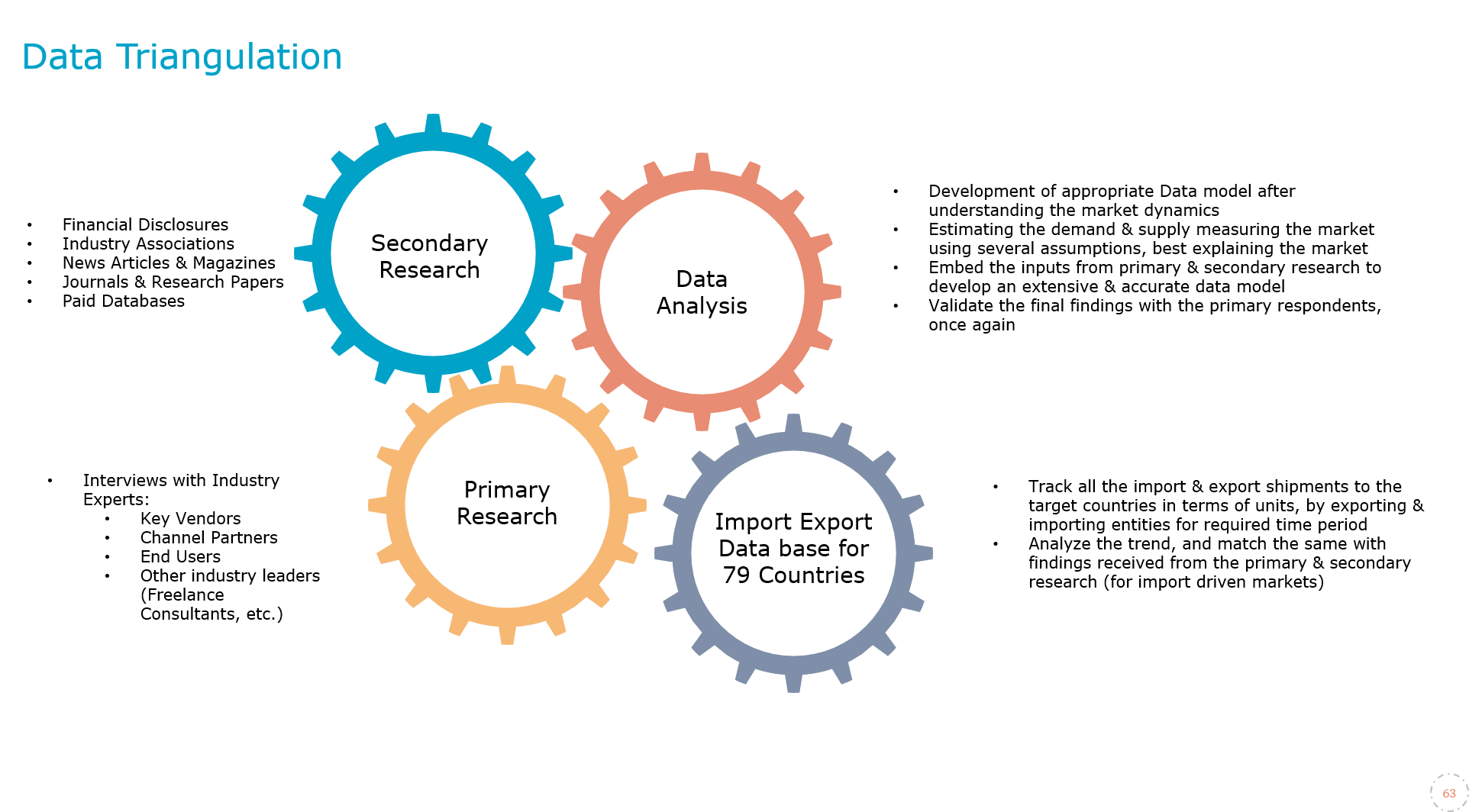
4. Data Forecast and FinalizationThe final phase involves forecasting future market trends based on the analyzed data. MarkNtel Advisors utilize predictive modeling and time series analysis to anticipate market behaviors. The insights are then compiled into comprehensive reports, featuring visual aids like charts and graphs, and include strategic recommendations to inform client decision-making

